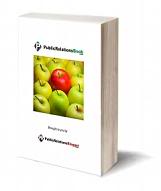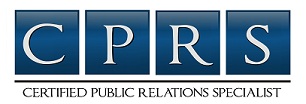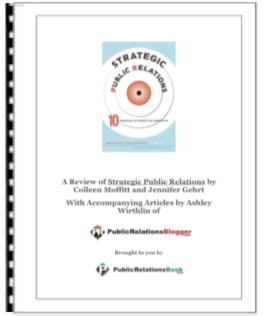________________________________________________________________________
 I was reviewing a friend's business plan last night and noticed that one of his top 4 methods of gaining traffic and exposure was the use of Google's AdWords. While I don't think AdWords are necessarily bad, I know there are other (better, more cost effective) ways to generate traffic. I also know that AdWords may be a necessary evil down the road for a brand who's publicity has died down.
I was reviewing a friend's business plan last night and noticed that one of his top 4 methods of gaining traffic and exposure was the use of Google's AdWords. While I don't think AdWords are necessarily bad, I know there are other (better, more cost effective) ways to generate traffic. I also know that AdWords may be a necessary evil down the road for a brand who's publicity has died down.
4 Reasons Public Relations (Not Advertising) Builds a Brand
________________________________________
 I was reviewing a friend's business plan last night and noticed that one of his top 4 methods of gaining traffic and exposure was the use of Google's AdWords. While I don't think AdWords are necessarily bad, I know there are other (better, more cost effective) ways to generate traffic. I also know that AdWords may be a necessary evil down the road for a brand who's publicity has died down.
I was reviewing a friend's business plan last night and noticed that one of his top 4 methods of gaining traffic and exposure was the use of Google's AdWords. While I don't think AdWords are necessarily bad, I know there are other (better, more cost effective) ways to generate traffic. I also know that AdWords may be a necessary evil down the road for a brand who's publicity has died down. Publicity is what helps to bring a brand to life, and it can be achieved through methods other than AdWords. Public relations offers much in the way of getting publicity for your company, such as the press release, the use of social networking, monitoring of word of mouth (WOM), and the utilization of journalists and bloggers. (To read more about PR tools and social media, check out PR Tips & Tactics | Using Social Media to Connect With Your Target Audience)
Building a brand is not achieved through advertising, but rather publicity. A prime example of this is Starbucks who had spent less than $10 million in advertising in its first 10 years. Larger companies like McDonald's spend more and more on advertising to maintain their brand and keep their position in the consumers' minds. For older, more established companies, advertising helps to remind the world that they are still around. For a new company, it won't do much good in the way or "reminding". This is where publicity and PR come into play.
Reasons (among others) PR works better for the birth of a brand:
- PR is more reputable and trustworthy than advertising.
- Advertising helps to maintain a brand, not build it.
- A company will (usually) not gain much momentum from advertising early in the brand's life.
- Advertising costs exponentially more than PR, and advertising's effects are not as long lasting as those of PR.
Referring again to Starbucks, they rode the PR train until just recently when advertising was needed to maintain their market (and mind) share. PR worked for them for all of the reasons above, and they were able to continue using it.
In order to generate publicity and buzz around a brand it first has to be capable of generating publicity. A way to do this: being the first in a category or niche market. For example, Jell-O (now synonymous with gelatin desserts) was the first brand of gelatin desserts, and Xerox (also synonymous with its product: copiers) was the first plain-paper copier. Being first in their categories helped to generate massive amounts of publicity. Now, later in the brands' life cycles, advertising is needed to maintain the brand. Another great benefit of being the first: the brands have captured mind share, and have created a new meaning for their names. When a consumer needs a cotton swab or a tissue, they think of Q-Tips or Kleenex, and even call all tissues and cotton swabs as Q-Tips and Kleenexes. This only helps to reiterate the brand and its "quality" for being first.
Media is more prone to talk about what's new, hot, and emerging, rather than what is better. While consumers are usually welcoming of better products, they are more interested in learning about new products. For example, the Blu-ray player is not only supposedly better than the DVD player, it is new (to consumers).
For many years public relations has been seen as a secondary option to marketing and advertising. The combination of the two and the use of PR to bring a brand to life are vital to the well-being of a brand. PR should be used first (and most times over advertising) to help promote a brand and company. Advertising ought to be used to maintain a brand's already generated publicity. Though PR is harder to control, and usually the result of outside parties reporting and mentioning your company, you can use the new tools that technology has given to advertisers, PR professionals, and marketers alike. Using these tools, combining PR and marketing efforts, and being a part of your online reputation, PR can build a brand.
Popular choices
- Non Gamstop Casino
- Mejores Salas De Póker
- Non Gamstop Casinos
- Siti Casino Online Non Aams
- Migliori Siti Casino Online
- UK Online Casinos Not On Gamstop
- Non Gamstop Casino Sites UK
- Non Gamstop Casino Sites UK
- UK Casino Not On Gamstop
- Casinos Not On Gamstop
- Online Casino
- オンラインカジノ
- UK Casino Not On Gamstop
- UK Casino Not On Gamstop
- Reputable Non Gamstop Casinos
- Casinos Not On Gamstop
- Best Non Gamstop Casinos
- Non Gamstop Casino
- Casinos Not On Gamstop
- Slots Not On Gamstop
- Non Gamstop Casino
- Casino Non Aams
Subscribe to:
Post Comments (Atom)






Comments (6)
December 2, 2009 at 9:24 PM
Great post. I couldn't agree more!
Cheers,
Kathleen Rake
December 3, 2009 at 10:19 AM
Thanks for the comment, Kathleen. Do you have any other reasons PR might be a better solution for building brands than advertising?
December 4, 2009 at 9:05 AM
Too bad more companies don't realize the value of and value in good PR. We always tell clients that it is the third leg of good marketing. Thanks for the input.
December 4, 2009 at 10:06 AM
Very true, Ron; marketing, advertising, and PR seem to be coming together with new tools and tactics, but it still seems PR is a second choice to advertising. Glad to hear you advocate its use to clients! Thanks for the comment.
December 4, 2009 at 10:07 AM
Yes..this is all true. I agree.
Our clients have found great value in solid PR ROI before, during, and after their event or campaign.
And when you compare ad dollars to PR dollars - you get more bang for your buck with PR dollars.
Gregg Champion
Champion Media & Entertainment
December 4, 2009 at 3:20 PM
Thanks for the comment, Gregg; I agree very much that PR dollars do much more for a company.
Post a Comment